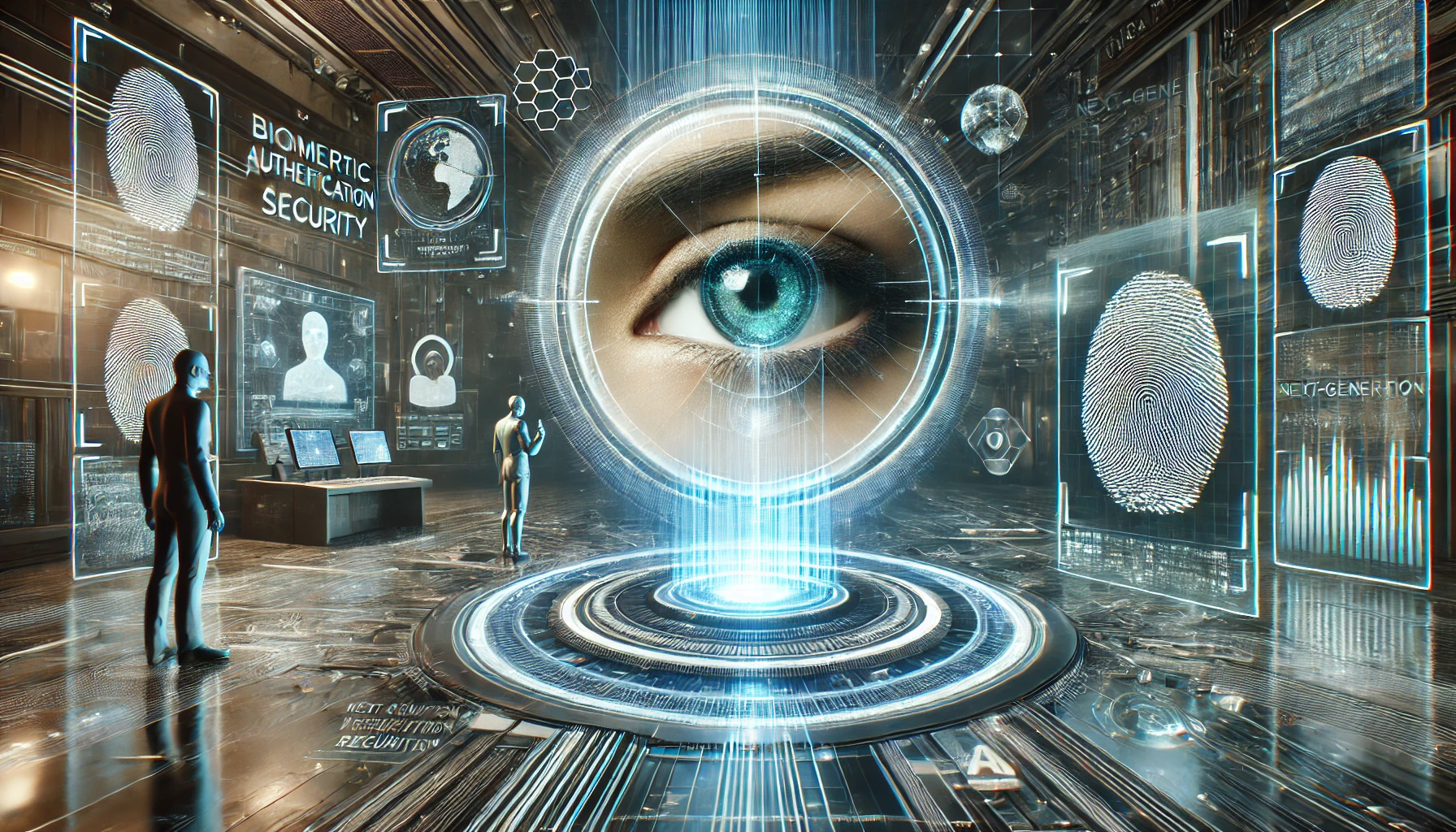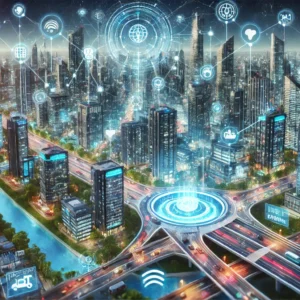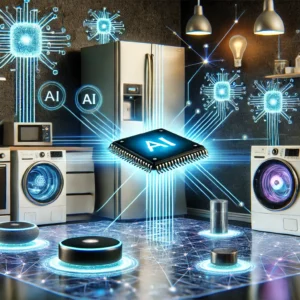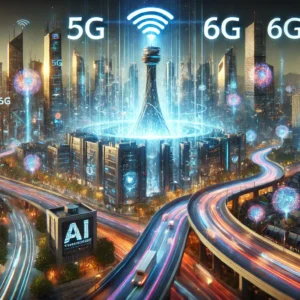
Picture a world where unlocking your smartphone or accessing secure buildings isn’t confined to a simple fingerprint scan. Instead, cutting-edge biometric security now harnesses retinal scans, vein mapping, and advanced facial recognition. In 2025, as our gadgets and systems become increasingly intelligent, these new technologies are transforming everyday security—from government systems to private enterprises, and even our personal lives.
The New Era of Biometric Security
Biometric security is evolving at breakneck speed. No longer are fingerprints the sole guard at the gate; today’s innovations include retinal scans that analyze the unique patterns in our eyes, vein mapping that captures the intricate layout of blood vessels, and facial recognition systems enhanced by AI algorithms. These methods provide higher precision and significantly reduce the risk of identity fraud. In our fast-paced digital landscape, where cyber threats loom large, these advancements are not just impressive feats of technology—they are essential shields for both individuals and organizations.
The race to perfect these systems is intensifying globally, spurred by a convergence of government initiatives, political debates, academic research, and vibrant market competition. Each of these domains is fueling a future where biometric security is more accurate, robust, and widely accessible.
Government Initiatives and Regulatory Frameworks
Governments worldwide are stepping up their game in biometrics. In response to rising cybercrime and security breaches, many national and local authorities are integrating advanced biometric systems into their public services. For example, several European countries have recently updated their data protection regulations to incorporate standards for biometric data use, ensuring both enhanced security and privacy for citizens.
In the United States, government agencies are testing retinal and vein mapping technologies to secure sensitive facilities and streamline identity verification in federal programs. Initiatives like these are often accompanied by significant funding boosts aimed at modernizing security infrastructures, as noted in recent governmental reports and policy briefs. Political leaders frequently underscore the importance of these technologies in national security, emphasizing that robust biometric systems can serve as the first line of defense against both physical and cyber threats.
Moreover, international organizations are working on standardizing biometric data handling to ensure interoperability and consistency across borders. This global regulatory drive not only facilitates better security practices but also helps in establishing trust in biometric systems—a crucial factor for their widespread adoption.
Political Debates and Economic Implications
The rise of advanced biometric security technologies has also sparked lively political debates. On one side, proponents argue that robust biometric systems are indispensable for protecting national infrastructure and reducing fraud. On the other, privacy advocates and civil rights groups warn of potential overreach and the risks of mass surveillance. These discussions have become a staple in parliamentary sessions and public forums alike.
For instance, during a recent congressional hearing in the U.S., lawmakers debated the balance between enhanced security and individual privacy, with some insisting on stringent oversight to prevent abuse of biometric data. Similarly, political debates in the European Union reflect a shared concern: while these technologies promise greater safety, there is a palpable anxiety about how data might be exploited by governments or corporations.
Economically, the biometric security market is booming. Analysts predict that the sector could generate billions of dollars in revenue over the next decade, driven by both public and private investments. Major tech conglomerates are vying for dominance, and venture capital is flowing into startups innovating in retinal scanning, vein mapping, and AI-enhanced facial recognition. This economic surge is not confined to Silicon Valley; global hubs in East Asia, Europe, and emerging markets are rapidly becoming hotbeds of biometric innovation.
Cutting-Edge Research and Lab Innovations
At the heart of these advancements are research labs and pioneering scientists who are reimagining what biometric security can be. In prestigious institutions around the world, multidisciplinary teams are working on projects that push the boundaries of what is possible. Recent studies published in peer-reviewed journals have demonstrated that retinal scanning technology, for example, can achieve near-perfect accuracy under a variety of conditions—a breakthrough that could revolutionize everything from airport security to personal device authentication.
Researchers are also exploring vein mapping as a means to counteract the vulnerabilities of traditional biometric systems. Unlike fingerprints, the pattern of veins beneath our skin is incredibly difficult to replicate, making it a formidable tool in the fight against identity theft. Collaborative projects between universities and tech firms are now testing prototypes that integrate these technologies into compact, energy-efficient chips suitable for everyday devices.
The pace of innovation in these labs is relentless. Some experiments have yielded prototypes that not only verify identities with astonishing precision but also learn and adapt to new environmental factors over time. This adaptive capability is expected to be a game-changer, enabling biometric systems to remain effective even as conditions change—a crucial feature for both mobile devices and fixed security installations.
Voices from Celebrities, Athletes, and Business Leaders
It’s not just the technical experts and policymakers who are excited about these breakthroughs. Celebrities, sports figures, and prominent business leaders have also taken notice. High-profile athletes have endorsed biometric security in wearable devices that monitor performance, praising these systems for their precision and reliability. In interviews, sports stars have expressed how enhanced facial recognition features on their devices help keep their personal data secure, allowing them to focus on training and competition without worrying about digital threats.
Business moguls, on the other hand, see advanced biometrics as a lucrative investment opportunity. Top executives in tech companies are touting the potential of these technologies to revolutionize customer service, reduce fraud, and even streamline supply chain management. Many have predicted that the global market for advanced biometric security could exceed tens of billions of dollars in revenue, setting the stage for a significant economic transformation. The buzz on social media and in business circles is palpable—everyone from venture capitalists to startup founders is keen to stake a claim in what they see as the next frontier in digital security.
Perspectives from Different Age Groups
Wisdom from the Older Generation
For many in the older generation, the promise of biometric security is both exciting and a little daunting. They often recall times when security was managed with simple locks and keys, and the idea of an all-encompassing digital security system seems almost futuristic. Yet, there is also a sense of reassurance that these technologies bring enhanced safety to personal and financial information. Older adults appreciate the meticulous care that goes into biometric systems, even if they sometimes find the technology intimidating. Their experiences remind us that the evolution of security is not just about innovation—it’s also about building trust across generations.
The Digital Natives’ Perspective
In contrast, the younger, tech-savvy population is almost entirely on board with these developments. Digital natives, who have grown up with smartphones and social media, see biometric security as the natural progression of technology. For them, unlocking a device with a quick glance or a subtle vein scan is just another part of a seamless, interconnected digital experience. They value the speed and convenience of these systems, often sharing their experiences on social media and online forums. Their enthusiasm is infectious, driving demand for ever more advanced and integrated security solutions that promise both convenience and a robust safeguard against cyber threats.
Social and Cultural Impact
The societal impact of advanced biometric security extends far beyond the technical sphere. As these systems become more pervasive, they are reshaping our interactions with technology and each other. In smart cities, for example, biometric systems are being integrated into public transport and municipal services, streamlining everything from ticketing to access control. This integration is creating a more connected, efficient urban environment where technology not only enhances convenience but also improves safety.
However, the cultural shift is not without its challenges. There is an ongoing dialogue about digital privacy and the potential for surveillance. In many communities, especially among those who value personal privacy, the adoption of these technologies is met with skepticism. People worry about who controls the data and how it might be used. These concerns have led to calls for stronger data protection laws and more transparent policies. The balance between innovation and privacy is delicate, and it is a topic that will continue to evolve as these technologies become even more integrated into our lives.
Global Business, Revenue, and Market Trends
The business landscape is undergoing a seismic shift thanks to advances in biometric security. Global markets are witnessing an influx of investments in research, development, and manufacturing of biometric devices. Major tech companies are forging partnerships with governments and research institutions to pioneer new applications and set industry standards. In Asia, particularly in countries like South Korea and Japan, there is a concentrated effort to integrate advanced biometrics into everyday public services and consumer products, fueling market growth.
Financial analysts predict that the biometric security market will see exponential growth over the next decade. As more industries adopt these technologies—from healthcare and finance to retail and transportation—the potential for revenue generation is immense. Companies are already reporting increased customer trust and improved operational efficiencies as a direct result of biometric systems. This economic momentum is further bolstered by emerging markets, where the adoption of secure digital identity solutions is seen as a critical driver of modernization and economic development.
For those keeping a close eye on the market, several important dates and milestones stand out:
- 2023-2024: Early-stage adoption with pilot projects in government and private sectors.
- 2025: Significant regulatory advancements and commercial deployments, with increased investment from global tech leaders.
- 2030: Predicted global ubiquity of advanced biometric systems in both consumer and enterprise applications.
These trends underscore a rapidly evolving market where innovation is both a catalyst for growth and a strategic imperative.
Behind the Technology: How It Works
The magic behind advanced biometric security lies in a combination of hardware innovations and sophisticated software algorithms. Let’s take a closer look at three of the most promising technologies:
Retinal Scans
Retinal scanning technology leverages the unique patterns of blood vessels in the back of the eye. Unlike fingerprints, which can sometimes be replicated or altered, the retina offers a high level of security due to its complexity. Cutting-edge sensors capture high-resolution images of the retina, which are then analyzed using machine learning algorithms to confirm an individual’s identity. This technology is already being trialed in high-security environments such as government buildings and military installations.
Vein Mapping
Vein mapping involves capturing the intricate network of veins under the skin, usually in the hand or forearm. Because vein patterns are highly individualized and reside beneath the surface, they offer an added layer of security. Advanced infrared technology is often used to detect these patterns, and the data is processed in real-time by AI algorithms that can quickly match the pattern to stored profiles. Vein mapping is finding applications in sectors where traditional methods might be insufficient, such as banking and secure access control.
Facial Recognition Upgrades
Facial recognition technology has been around for a while, but recent upgrades have taken it to new heights. Enhanced algorithms now account for subtle changes in expression, aging, and even environmental factors like lighting. With the integration of 3D imaging and deep learning, modern facial recognition systems provide far greater accuracy and security. These systems are widely deployed in public safety, retail, and even personal devices, offering a non-intrusive yet highly reliable method of identity verification.
Personal Stories and Anecdotes
Every technological revolution carries with it a tapestry of personal experiences and heartfelt narratives. Consider the story of a small business owner who installed advanced biometric access controls in her store. She recounts how a simple vein scan not only streamlined her store’s operations but also gave her peace of mind that only authorized personnel could access sensitive areas. Or think of a celebrity who, in a candid interview, expressed both awe and caution about the increasing use of retinal scans in public spaces—a sentiment that resonates with many who see both promise and peril in these technologies.
These narratives remind us that while the technology is groundbreaking, its real-world impact is deeply personal. Whether it’s ensuring the safety of a loved one or protecting personal data, the human element remains at the heart of biometric security.
Societal Implications and Ethical Considerations
As with any transformative technology, the widespread adoption of advanced biometric security raises important ethical questions. Data privacy, consent, and the potential for misuse are significant concerns that must be addressed head-on. While governments and tech companies are working to create robust regulatory frameworks, the dialogue among civil society remains vibrant.
For example, community groups and privacy advocates often hold town hall meetings to discuss the implications of deploying retinal scans and facial recognition in public spaces. These discussions underscore the need for transparency and the development of systems that respect individual rights while enhancing security. The challenge is to strike a balance—leveraging the benefits of advanced biometrics while safeguarding against potential abuses.
Global Impact and Cultural Shifts
In a rapidly globalizing world, biometric security is more than just a technological upgrade—it’s a cultural shift. In countries across Asia, Europe, and the Americas, advanced biometric systems are reshaping public services, commerce, and everyday interactions. In South Korea, for instance, biometric kiosks are now common in public transportation hubs, making daily commutes safer and more efficient. Meanwhile, in Europe, government-led initiatives are integrating these technologies into national identity programs, fostering a culture of digital trust and security.
Across cultures, the narrative is one of progress interwoven with caution. While younger generations embrace the convenience and efficiency of biometric security, older individuals often express a mix of admiration and apprehension. This generational dialogue not only enriches the debate but also informs the way these technologies are implemented—ensuring that advancements are inclusive and respectful of diverse perspectives.
Future Prospects and Innovations on the Horizon
Looking ahead, the future of biometric security is incredibly promising, yet inherently unpredictable. Researchers are already exploring next-generation techniques that could make current methods seem rudimentary. Imagine biometric systems that combine multiple modalities—retina, vein, and facial recognition—into a single, adaptive system capable of verifying identity with near-perfect accuracy. Such multi-modal systems could become the gold standard in sectors ranging from healthcare to border control.
Moreover, the integration of blockchain technology is being explored as a way to secure biometric data. By decentralizing data storage and using cryptographic methods to safeguard information, blockchain could address many of the privacy concerns that currently dog the industry. While these innovations are still in their infancy, they point to a future where biometric security is both omnipresent and virtually unbreakable.
FAQs
Q1: What are the latest advances in biometric security beyond fingerprints?
A: The field has expanded to include retinal scans, vein mapping, and upgraded facial recognition systems, all of which offer improved accuracy and security compared to traditional fingerprint methods.
Q2: How are governments influencing the development of these technologies?
A: Governments are investing in research, updating regulations, and launching initiatives to integrate advanced biometric systems into public services, with a strong emphasis on data protection and privacy.
Q3: What are some of the ethical concerns associated with biometric security?
A: Major concerns include data privacy, the potential for misuse of biometric data, and the need for transparent regulatory frameworks to ensure that these technologies are used responsibly.
Q4: How is the market responding to these innovations?
A: The global market for advanced biometric security is booming, with significant investments from tech companies, startups, and venture capitalists, and is expected to generate billions in revenue in the coming years.
Q5: What can we expect in terms of future developments in biometric security?
A: Future developments may include multi-modal systems combining several biometric modalities and the integration of blockchain to secure biometric data, ensuring enhanced security and privacy.
Final Thoughts
The evolution of biometric security beyond fingerprints is more than a technological breakthrough—it’s a revolution that touches every aspect of modern life. As retinal scans, vein mapping, and upgraded facial recognition systems become part of our daily reality, they promise to not only safeguard our identities but also to reshape the way we interact with technology. Whether you’re a policy maker, a tech enthusiast, or a concerned citizen, the implications of these advancements are profound and far-reaching.
In an era marked by rapid innovation, it’s crucial to balance technological progress with ethical considerations. The ongoing dialogue among governments, researchers, business leaders, and the public is paving the way for systems that are both secure and respectful of individual privacy. With each new development, we move closer to a future where biometric security is robust, reliable, and seamlessly integrated into our everyday lives.
For those interested in learning more about these exciting trends, trusted sources like IEEE Spectrum and TechCrunch offer up-to-date insights and in-depth analysis. Stay informed, stay secure, and embrace the future of advanced biometric security.
This article captures the dynamic landscape of biometric security, weaving together perspectives from government initiatives, political debates, cutting-edge research, and real-world experiences. From the cautious wisdom of older generations to the unbridled enthusiasm of youth, the story of biometric security is as multifaceted as it is transformative. Join us in exploring this fascinating frontier—a space where technology meets humanity in its most innovative form.






